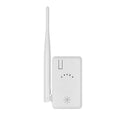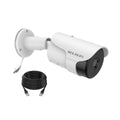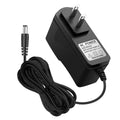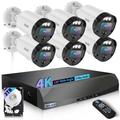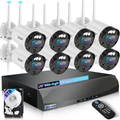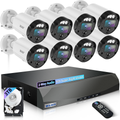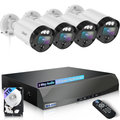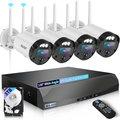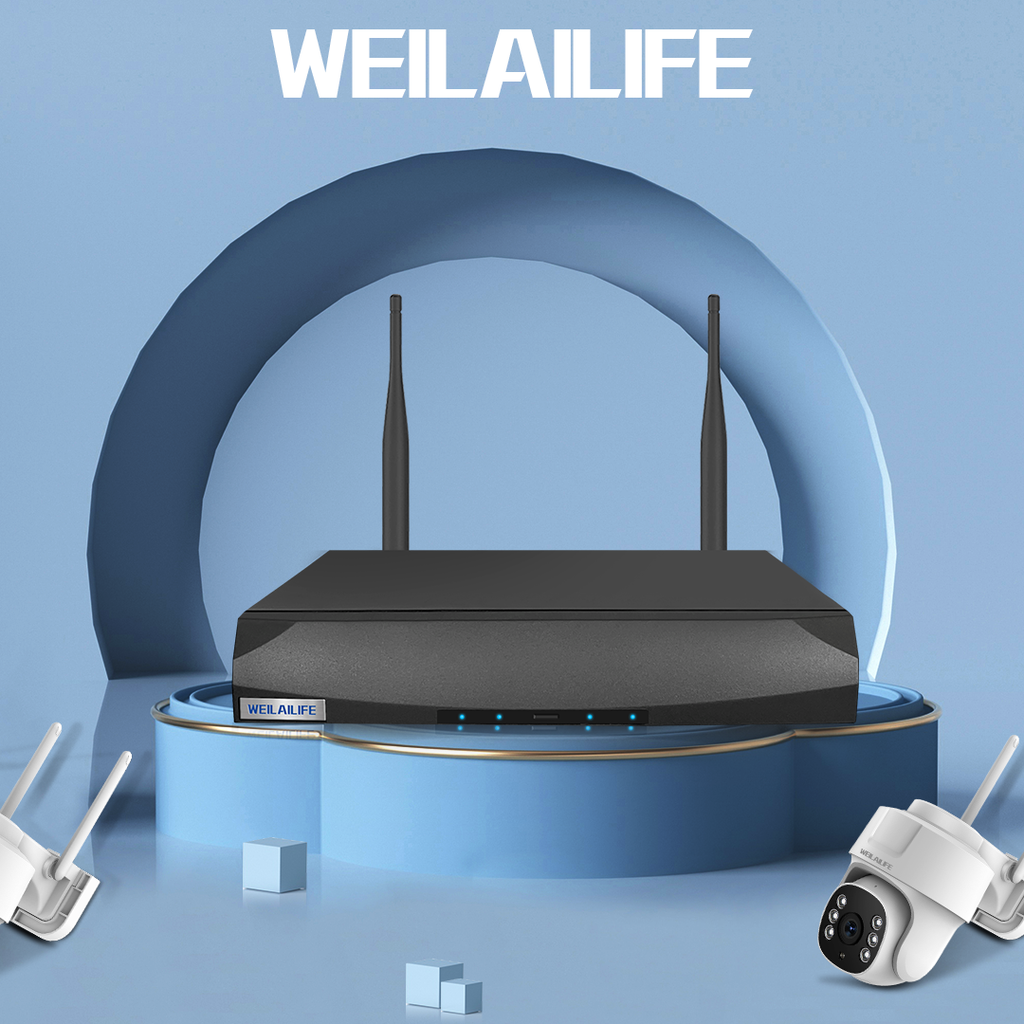Enhancing Security Camera Systems with Advanced Thermal Solutions
Introduction:
From analog surveillance to digital and now network video monitoring, security camera systems have evolved into high-end, intelligent solutions with enhanced image quality and higher data demands. As these systems become more sophisticated, the need for efficient thermal management solutions has grown. High temperatures and inadequate heat dissipation can lead to performance issues, impacting image clarity, data transmission, and overall system stability. This article explores the importance of thermal management in the context of security camera systems, particularly from the perspective of the WEILAILIFE brand.
The Significance of Thermal Management in Security Camera Systems:
Intelligent security camera systems comprise a wide range of devices, such as cameras, infrared equipment, pan-tilt-zoom (PTZ) systems, monitors, recorders, and more. To ensure their reliable and long-term operation, effective thermal management solutions are crucial.
Utilizing Thermal Conductive Silicone Pads:
Thermal conductive silicone pads are ideal for meeting the heat dissipation requirements of various power security cameras. These pads undergo rigorous high-temperature aging tests to guarantee the long-term reliability of security cameras.
Application of Low-Volatile Thermal Pads in Image Processing Modules:
Image sensors are vital components in security cameras, significantly impacting the overall performance of machine vision systems. The image sensor modules in high-definition security cameras generate substantial heat and are highly sensitive to volatile contaminants.
To avoid degradation of image quality due to volatile substances, it is essential to select thermal interface materials with low-volatile and low-bleeding characteristics.
Enhancing Heat Dissipation in Mainboards:
Heat generated by CPU, memory, and graphics processing units on the mainboard can cause instability in security cameras, leading to automatic restarts or system crashes. Adequate thermal management is necessary to prevent heat buildup and improve the reliability of the camera.
Thermal conductive silicone pads can be used to fill the gaps between the mainboard's heat-producing electronic components and the aluminum casting shell, effectively dissipating heat and stabilizing the system.
Effective Heat Dissipation in Power Boards:
Security cameras generate significant heat during operation, causing internal temperatures to rise rapidly. Without proper heat dissipation, the device can experience reduced performance and a decrease in reliability. To maintain stable and reliable operation, it is essential to reduce the thermal load on core components and alleviate thermal stress on circuit boards.
Enhancing Heat Dissipation in Dome Cameras:
Many dome cameras lack sufficient heat dissipation openings, which compromises their thermal performance. Elevated internal temperatures can cause camera malfunction or damage to other electronic components within the dome. Utilizing thermal interface materials for heat conduction ensures that the camera operates within safe temperature limits.
Conclusion:
As security camera systems continue to advance, the importance of efficient thermal management solutions cannot be overstated. Ensuring optimal heat dissipation in these systems is crucial for maintaining reliable performance, extending the lifespan of devices, and enhancing overall user experience. WEILAILIFE brand prides itself on offering advanced thermal solutions that meet the demanding needs of modern security camera systems, providing users with top-notch surveillance capabilities.
From analog surveillance to digital and now network video monitoring, security camera systems have evolved into high-end, intelligent solutions with enhanced image quality and higher data demands. As these systems become more sophisticated, the need for efficient thermal management solutions has grown. High temperatures and inadequate heat dissipation can lead to performance issues, impacting image clarity, data transmission, and overall system stability. This article explores the importance of thermal management in the context of security camera systems, particularly from the perspective of the WEILAILIFE brand.
The Significance of Thermal Management in Security Camera Systems:
Intelligent security camera systems comprise a wide range of devices, such as cameras, infrared equipment, pan-tilt-zoom (PTZ) systems, monitors, recorders, and more. To ensure their reliable and long-term operation, effective thermal management solutions are crucial.
Utilizing Thermal Conductive Silicone Pads:
Thermal conductive silicone pads are ideal for meeting the heat dissipation requirements of various power security cameras. These pads undergo rigorous high-temperature aging tests to guarantee the long-term reliability of security cameras.
Application of Low-Volatile Thermal Pads in Image Processing Modules:
Image sensors are vital components in security cameras, significantly impacting the overall performance of machine vision systems. The image sensor modules in high-definition security cameras generate substantial heat and are highly sensitive to volatile contaminants.
To avoid degradation of image quality due to volatile substances, it is essential to select thermal interface materials with low-volatile and low-bleeding characteristics.
Enhancing Heat Dissipation in Mainboards:
Heat generated by CPU, memory, and graphics processing units on the mainboard can cause instability in security cameras, leading to automatic restarts or system crashes. Adequate thermal management is necessary to prevent heat buildup and improve the reliability of the camera.
Thermal conductive silicone pads can be used to fill the gaps between the mainboard's heat-producing electronic components and the aluminum casting shell, effectively dissipating heat and stabilizing the system.
Effective Heat Dissipation in Power Boards:
Security cameras generate significant heat during operation, causing internal temperatures to rise rapidly. Without proper heat dissipation, the device can experience reduced performance and a decrease in reliability. To maintain stable and reliable operation, it is essential to reduce the thermal load on core components and alleviate thermal stress on circuit boards.
Enhancing Heat Dissipation in Dome Cameras:
Many dome cameras lack sufficient heat dissipation openings, which compromises their thermal performance. Elevated internal temperatures can cause camera malfunction or damage to other electronic components within the dome. Utilizing thermal interface materials for heat conduction ensures that the camera operates within safe temperature limits.
Conclusion:
As security camera systems continue to advance, the importance of efficient thermal management solutions cannot be overstated. Ensuring optimal heat dissipation in these systems is crucial for maintaining reliable performance, extending the lifespan of devices, and enhancing overall user experience. WEILAILIFE brand prides itself on offering advanced thermal solutions that meet the demanding needs of modern security camera systems, providing users with top-notch surveillance capabilities.
